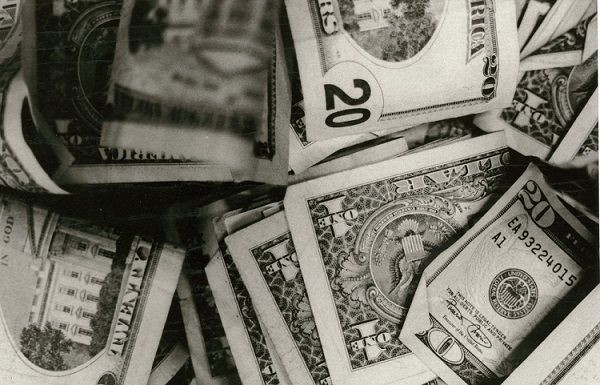Banks Have Received $2.3 Trillion In Quantitative Easing But Are Lending Less To Small Businesses And Consumers Than Before The Financial Crisis, So Why Not Try Peer-To-Peer Lending?

Last month the amount that banks had available for lending to businesses and households increased by $95.8 billion to a total of $2.3 trillion. That's thanks in part to the Federal Reserve's quantitative easing program, and it would be good news if the banks were actually lending. Sure, they're doing some business lending, but not so much for small businesses and consumers.
Enter peer-to-peer lending, or P2P lending, which involves direct lending to unrelated individuals, or peers, without going through the traditional financial intermediaries such as banks and other financial institutions. The downside is that access is very difficult and so far these loans are an option only for those who rate highly in credit checks, probably not a great prospect for the small businesses that have been turned down by banks. Most P2P loans are unsecured and granted without the need for collateral. It sounds risky, hence the need for stringent underwriting on behalf of the lender.
"The government, through a series of capital restraints, is forcing the banks to have an unusually large amount of liquidity," said Richard Bove in a recent interview with The Street website. He points to rules including Basel III, as well as a supplementary leverage ratio for big U.S. banks like JPMorgan Chase & Co. (NYSE:JPM), Bank of America Corp (NYSE:BAC), Citigroup Inc. (C) and Wells Fargo & Co. (NYSE:WFC), among other requirements that force banks to have a larger portion of capital in cash or cashlike instruments, which means it isn't available for lending.
Unlike traditional bank loans, peer-to-peer lending interest rates are normally lower and usually based on the recipient's credit and the size of the loan required. One lender, Lending Club, which was voted one of Forbes' most promosing companies in 2011 and 2012, rejects around 90 percent of all applicants because of strict net worth and income requirements. You can choose to invest your money with the company by signing up online or you can apply to borrow money in the same place.
“There’s been an explosion of new companies using the Internet to originate loans,” said Josh Koplewicz, founder of Thayer Street Partners, an investment firm that focuses on technology and financial services. “The barriers to entry are low. There are people setting up shop with a couple hundred thousand dollars.”
However, borrowers must have a minimum FICO score of 660. The online borrower charges interest rates ranging from 6 percent to 31 percent depending on the borrower’s credit score, but the average is normally 10 percent. This represents a rate that’s lower than credit cards for borrowers and higher than savings accounts of about 1 percent for lenders, which means it’s an attractive option at both ends. The repayment rate of 97 percent means that the model works, which, again, is because the additional costs of using a bank are cut out, meaning the P2P lender can offer good interest rates while taking just 1 percent in fees for each loan.
For now, though, the average person will have to wait until the banks start lending again, whenever that might be, but it does raise questions about what banks are doing with all that money.
Right now, they are not doing much with it except handing it right back to the Federal Reserve --because the Federal Reserve pays out 25 percent in interest, a lot more than they would make by giving it to a small business owner, a homebuyer or for a personal loan with an interest rate of 4 percent to 10 percent.
In addition, the banks are being forced to increase the amount of reserve capital they hold in the Federal Reserve to 4 percent under the Basel III regulations, which means they have been hoarding the money in order meet the minimum capital requirements by 2014, the industry deadline for Tier 1 financial institutions.
© Copyright IBTimes 2024. All rights reserved.





















